Historian and CovSoc member, Peter James, tells us a fascinating story that combines bicyles and tubular bells. Peter writes…..

In 1871 John Harrington the son of a farmer & born in Great Baddow Essex was living in Ryde on the Isle of Wight. His home address was 1 Cambridge Villas Swanmore Road Ryde and his business : The Arab Bicycle Company was based at Union Road in Ryde. By 1877 John had forged links with cycle manufacturers in Coventry. He visited Boston USA in that year and met up with Colonel Albert Pope who ran the Pope Manufacturing Company. They imported bicycles mainly from England. Pope was impressed with Harrington’s bicycle and ordered a quantity of eight. Strangely John supplied Duplex Excelsior models made by Bayliss Thomas & Co. Ltd. based in Lower Ford Street Coventry and not Arab Cycles. This may well have been a capacity issue but indicates the strength of his connections with Coventry and its increasing importance in the cycle industry.
In 1879 the company also had a London showroom in Southampton Buildings Chancery Lane and by 1880 John Harrington & Co. had premises at 18 & 20 Norman Buildings St. Lukes London. By 1885 all manufacturing had moved to Coventry with production of springs and saddles taking place at The Enamel & Cradle Spring Works in The Butts.
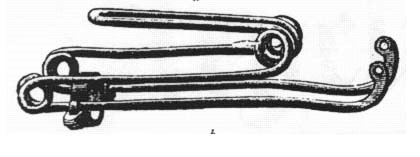

In the 1870s and 1880s John Harrington filed a number of patents mainly associated with the cycle industry. However in 1884 in the UK he patented tubular bells using bronze materials and in September 1888 obtained a patent in the USA.
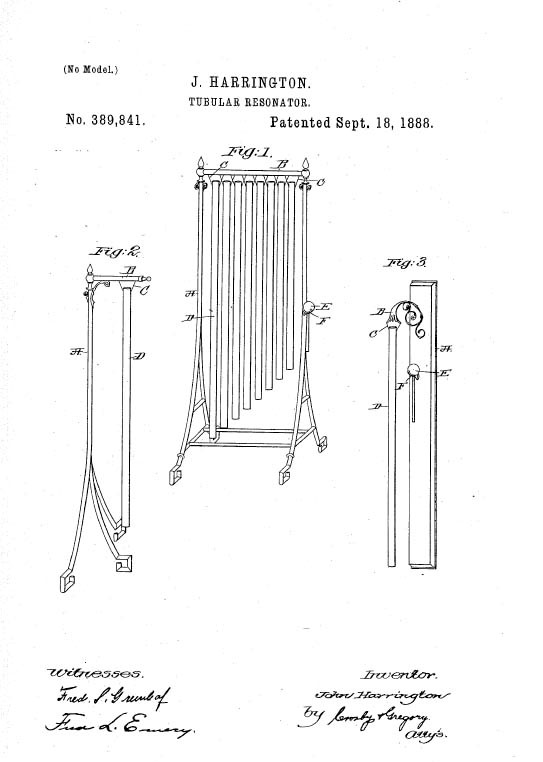
Tubular bell production commenced at The Butts around 1885 with manufacturing by Harrington, Latham & Co. Ltd. The company had previously operated from 4 Fleet Street in Coventry. Thomas Latham was a barrister born in 1848 in Saint Pancras, Middlesex. It is believed that he provided finance for the business.
The tubular bells were produced in different sizes with the larger ones being supplied to churches. They were less expensive than the alternative, didn’t need to be hung in a tower and could be rung by one person. The first orchestral usage was in 1896 with a performance of Arthur Sullivan’s “Golden Legend” in Coventry.
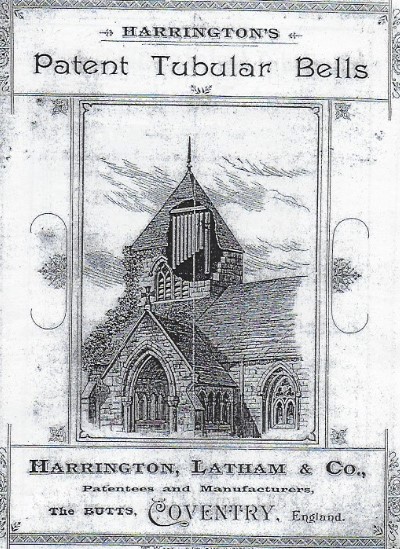
Manufacture of tubular bells continued at The Butts until 1900 when production was transferred to larger premises at 37 Clarendon Street in Earlsdon. By 1899 John Harrington had moved to Coventry and was living locally at Rock Fern House in Queens Road. Joseph Holland was the manager of the Clarendon Road facility and his son Alfred was an engineer there. They eventually became proprietors of the Tubular Bell Factory operating with the name of Harrington, Holland & Co. Ltd.
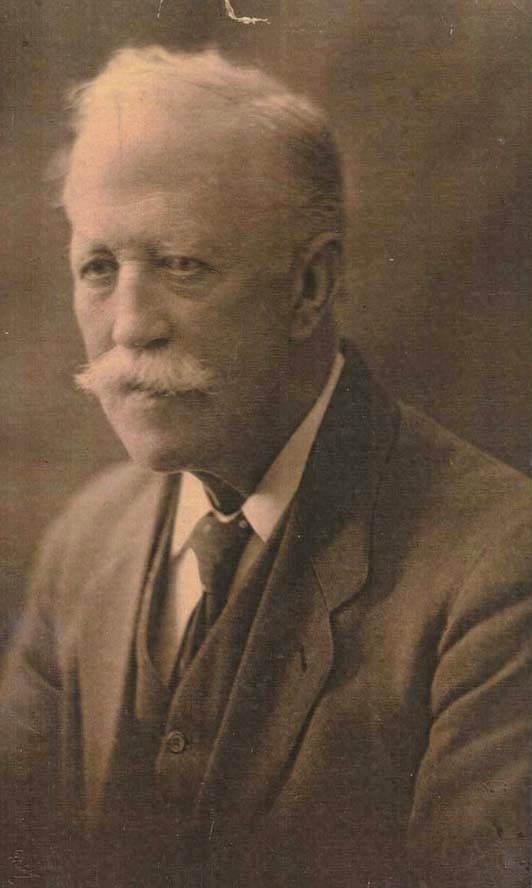
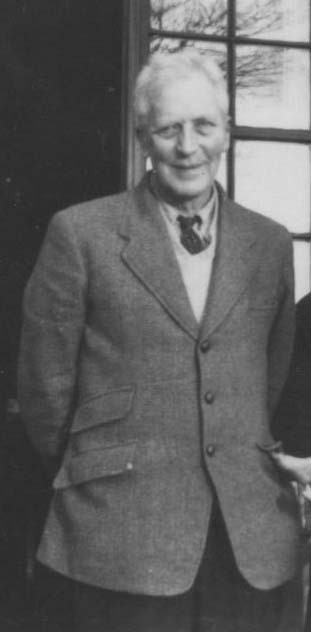
The bells had to be tuned and residents of Clarendon Street could hear this process quite clearly. Harry Weston who was a machine tool manufacturer and onetime Mayor of Coventry grew up living opposite the factory. In later life he recalled hearing the bells and described it as a pleasant experience he fondly remembered. The advent of the First World War in July 1914 seems to have triggered the decline and in some cases the end of some small engineering companies. In 1915 the Holland family decided to downsize and also diversify. Alfred began to buy, sell and repair motorcycles. In September 1915 he advertised a number of motorcycles for sale in the Midland Daily Telegraph. A Harley Davidson 7 h.p. twin, a 1915 CLyno 2 stroke, a Douglas 1912 TT Model, a 1912 Bradbury 4 h.p. 2 speed, a Rex 6h.p. and a 1913 NSU 3 h.p.
Soon after in October 1915 the premises at 37 Clarendon Street were put up for sale with adverts in the October and November editions of the M.D.T.

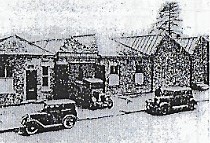
By 1920 the site was occupied by three companies who now shared the space. Caesar Cycle Co. Ltd. W. Jones, Cycle and Motor Exporter & The Stelfen Belt Co. Ltd.
By 1921 Joseph and Alfred Holland had both moved to a site on the corner of Earlsdon Avenue North and Hearsall Lane (by Hearsall Common). Harrington, Holland & Co.- the Tubular Bell Makers offices were next door to Alfred Holland – Motor Agent. Tubular bell production was now based in Whitefriars Street in Coventry.
Spennells Business Directory
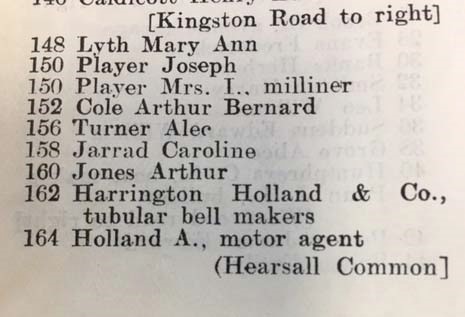

House numbers in Earlsdon Avenue were changed in 1924
After Alfred’s death in 1956 the garage business was taken over by his two sons Geoffrey and Bernard but it closed in the early 1960s. The last known church bell was manufactured in 1925 and supplied to All Saints in Chatham Kent.
The tubular bell business appears to have ceased trading after 40 years around 1925. As well as providing bells for wall clocks, dinner gongs and orchestras Harringtons had supplied around 300 tubular tower chimes for churches.
Photographs supplied by kind permission of Patricia Shorey
